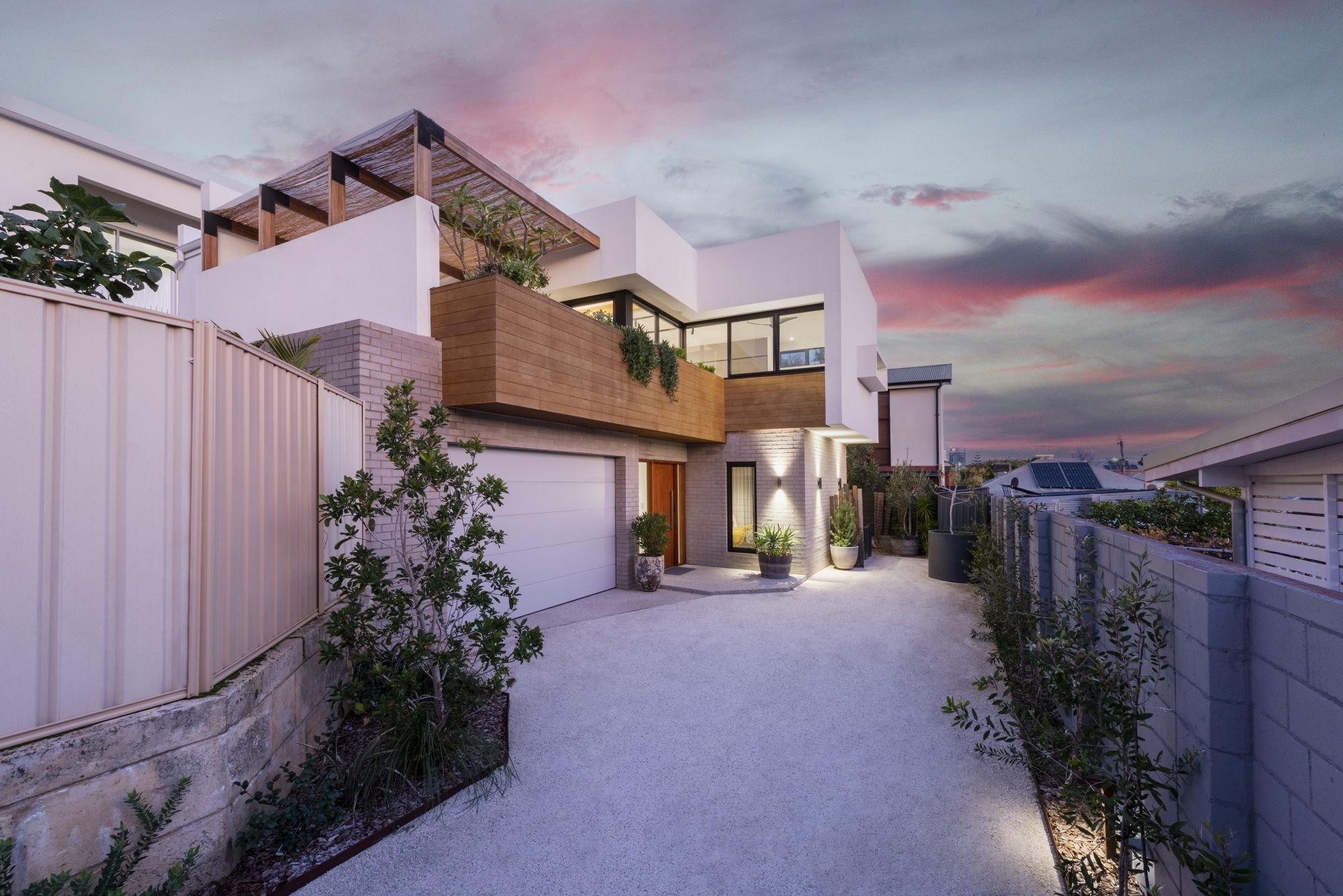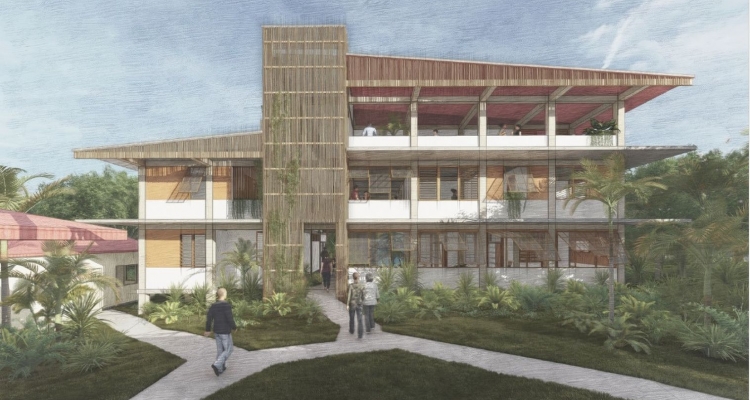How Residential Architects Develop Custom-made Homes for every single Way Of Life
The process by which household architects style tailored homes is a nuanced interplay of understanding client needs and equating those insights right into practical living areas. With extensive appointments and the usage of design devices, designers catch the essence of their customers' lifestyles, making sure that each home mirrors individual worths and goals.
Recognizing Customer Demands

Effective communication is paramount in this procedure. Architects must encourage customers to express their lifestyles, family members characteristics, and future aspirations, guaranteeing that the design reflects their distinct identity. By utilizing devices such as questionnaires, meetings, and aesthetic studies, designers can gather valuable insights right into the customer's vision.
In addition, recognizing the context in which a home will exist is crucial. Architects need to take into consideration factors such as the website attributes, regional environment, and cultural influences that can influence the layout. This holistic approach enables the production of spaces that are not only visually pleasing yet lasting and likewise sensible.
Ultimately, a deep understanding of client needs makes it possible for architects to produce personalized homes that improve the lifestyle for their occupants, fostering a feeling of belonging and convenience within their living settings.
Design Process and Collaboration
The design process in residential design is a dynamic interplay of imagination and partnership, where designers, clients, and various stakeholders work closely to bring a vision to life. This iterative trip generally begins with a series of meetings to establish a detailed understanding of the client's goals, preferences, and lifestyle requirements. Throughout these discussions, architects gather essential details, allowing them to conceive designs that straighten with the client's vision.
Adhering to the initial examinations, the design stage progresses through sketches, 3D designs, and architectural renderings. This visual communication functions as a device for designers to present concepts, while likewise inviting customer comments, making sure that the final layout reverberates with their expectations. Reliable partnership with engineers, specialists, and interior developers is critical during this stage, as it makes certain that all practical aspects of the task are effortlessly integrated.

Incorporating Way Of Living Components
Incorporating way of living components right into household layout is essential for developing rooms that genuinely reverberate with the inhabitants. residential architecture homes. This process starts with recognizing the distinct needs, choices, and day-to-day regimens of the homeowners. Architects take part in detailed discussions to uncover just how the specific or household utilizes their area, whether for entertaining visitors, going after hobbies, or looking for peaceful retreat
As soon as these insights are collected, designers can tailor layout functions that enhance day-to-day experiences. Open flooring plans might be created for families that focus on togetherness, while devoted work spaces can be integrated for those who work from home. Outside locations, such as gardens or patio areas, can be highlighted for family members that take pleasure in outdoor tasks or entertaining.
Additionally, adaptability is a crucial factor to consider; multi-functional areas permit adaptability as way of livings evolve with time. Personalized storage options can also be integrated to fulfill particular company demands, making sure that the home continues to be clutter-free and useful. Ultimately, by thoughtfully weaving way of living components into the architectural material, residential designers produce tailored homes that not only satisfy visual needs but also dramatically enhance the lifestyle for their clients.
Lasting and Smart Layout
Smart and lasting design significantly plays an essential duty in domestic style, as home owners look for to lessen their environmental influence while enhancing their living experiences. Designers are currently integrating eco-friendly products, energy-efficient systems, and ingenious technologies to develop homes that not just meet visual needs but also serve the earth.
Incorporating renewable resource sources, such as photovoltaic panels and Learn More wind turbines, allows home owners to harness natural resources, dramatically lowering reliance on traditional power grids. click site Smart home modern technologies even more boost sustainability by enhancing energy use through automated systems that control lights, air conditioning, and home heating based on occupancy and preferences.
Furthermore, making use of sustainable structure products-- like redeemed timber, bamboo, and reused steel-- advertises a circular economy, reducing waste and resource consumption. Architects also emphasize passive layout principles, making certain homes are oriented for optimum all-natural light and ventilation, thereby decreasing the requirement for man-made heating & cooling.
In enhancement to ecological advantages, lasting and clever style adds to the total comfort and health of citizens. By prioritizing interior air quality and natural environments, engineers create areas that foster health, enabling house owners to prosper in consistency with their environment.
Finalizing and Applying Strategies
Settling and applying strategies is an important phase in the property architecture procedure, where the vision of a tailored home begins to materialize. This phase involves precise focus to information, making certain that every aspect of the layout is precisely articulated and all set for construction. residential architecture homes. Engineers work together very closely with clients to evaluate last plans, resolving any type of last-minute modifications or worries, while image source guaranteeing that all components straighten with the home owner's way of living needs
Once plans are finalized, designers prepare thorough building files, consisting of in-depth illustrations and requirements that function as a blueprint for building contractors. These documents describe products, surfaces, and installation methods, giving quality for contractors and subcontractors. Additionally, safeguarding needed authorizations and adhering to neighborhood building ordinance is vital, as it makes certain compliance and smooth project implementation.
Effective interaction is important throughout this stage. Normal updates and conversations with building contractors aid to mitigate possible concerns before they arise. By promoting a collective atmosphere, designers can guarantee that the implementation straightens with the original vision. Ultimately, this crucial phase transforms principles right into reality, laying the foundation for a home that mirrors the one-of-a-kind lifestyle and preferences of its citizens.
Verdict
In verdict, domestic architects play a crucial role in crafting personalized homes that cater to diverse way of livings. Via precise understanding of client needs, collective style procedures, and the integration of way of living components, engineers guarantee that each home shows private choices.
The process by which household architects layout customized homes is a nuanced interplay of comprehending client demands and equating those understandings into functional living areas. Via extensive assessments and the use of layout tools, architects capture the significance of their clients' way of livings, guaranteeing that each home reflects personal values and desires. Architects should motivate customers to verbalize their way of lives, family dynamics, and future desires, making certain that the style shows their distinct identification.The layout procedure in residential architecture is a dynamic interaction of creative thinking and partnership, where architects, clients, and various stakeholders function carefully to bring a vision to life - residential architecture homes. Via careful understanding of customer requirements, joint design processes, and the combination of way of life components, designers make certain that each home mirrors individual choices